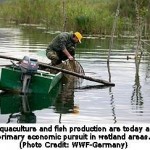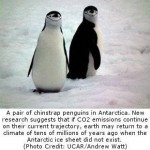
Mexico City – The Green Climate Fund, a part of last year’s broad international climate agreement in Cancun, Mexico, must become the window into an era of vastly greater financing for climate action in the developing world, the head of the United Nations climate change secretariat said on Friday, April 29.
“I am convinced that as governments, industry and investors increasingly realize that a low-carbon future in a world resilient to climate change is not only necessary but sustainable and profitable, then the necessary finance will flow faster than many now expect. A well-designed Green Climate Fund will help ensure that this happens sooner rather than later,” said Christiana Figueres, Executive Secretary of the United Nations Framework Convention on Climate Change (UNFCCC).
Ms. Figueres spoke after attending the first meeting of the Fund’s Transitional Committee in Mexico City, on 28-29 April.
“Every year, nations must work together to build better, more ambitious international responses in the common effort against human-generated climate change. The launch of the Green Climate Fund is one of the significant decisions that nations reached in Cancun, which show that governments can take repeated steps forward, including this year in Durban,” said Ms. Figueres.
“The members of the Transitional Committee from both developed and developing countries have set out an important vision for the fund as a central tool to assist countries to transform their economies towards a low-carbon, climate-resilient future and to help them deal with damage due to climate change,” said Ms. Figueres.
Members stressed the need for efficiency and effectiveness through clear accountability, ensuring that the fund will be responsive to the needs of developing countries, and underlining the need for good governance founded on the principles of equity, fairness, and trust.
They also underlined the Fund’s role in leveraging other sources of finance, including from the private sector, in order to scale up climate finance to the levels needed.
The Green Climate Fund is set in the broader context of an agreement by industrialized countries to mobilize USD 100 billion per year by 2020 for that purpose, from a mix of public and private sources.
The Transitional Committee includes experienced and respected individuals from the fields of finance and climate change, from both developed and developing countries. Its task is to propose an effective design for the new fund in time for approval by the next UN Climate Conference in Durban, in December, 2011.
The meeting elected three Co-Chairs, including Mexican Finance Minister Ernesto Cordero Arroyo, South African Minister in the Presidency for Planning Trevor Manuel and Norway’s State Secretary at the Ministry of Finance Kjetil Lund.
“This impressive and essential mix of experience and skills combines the practical knowledge of managing finance with the practical needs of developing nations to create sustainable futures,” said Ms. Figueres.
The Cancun Agreements, reached on 11 December in Cancun, Mexico, at the 2010 UN Climate Change Conference, are a set of significant decisions by the international community to address the long-term challenge of climate change collectively and comprehensively over time and to take concrete action now to speed up the global response.

About the UNFCCC
With 195 Parties, the United Nations Framework Convention on Climate Change (UNFCCC) has near universal membership and is the parent treaty of the 1997 Kyoto Protocol. The Kyoto Protocol has been ratified by 192 of the UNFCCC Parties. Under the Protocol, 37 States, consisting of highly industrialized countries and countries undergoing the process of transition to a market economy, have legally binding emission limitation and reduction commitments. The ultimate objective of both treaties is to stabilize greenhouse gas concentrations in the atmosphere at a level that will prevent dangerous human interference with the climate system. For more information, visit http://unfccc.int.
Source: UNFCCC.














